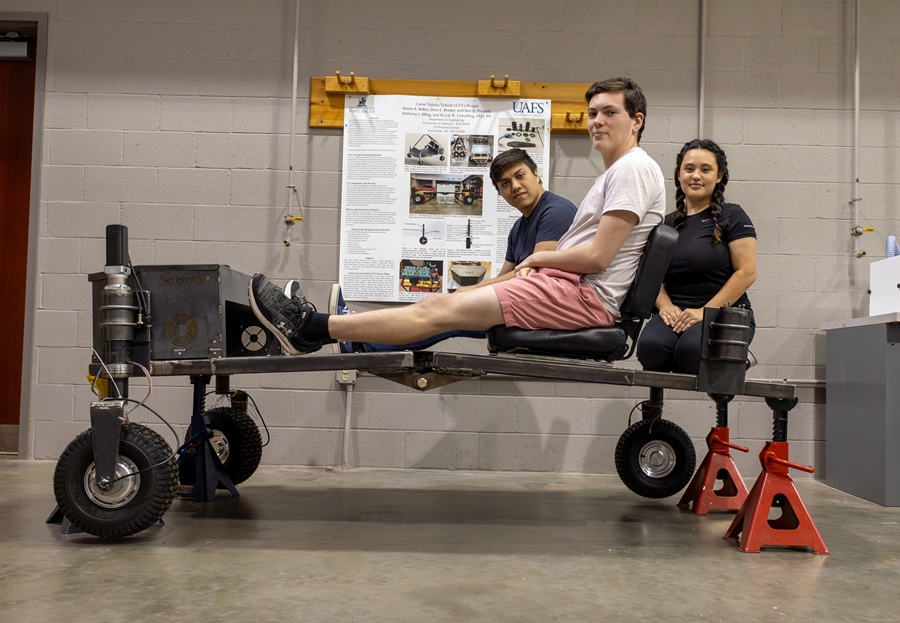Cognitive and laptop scientists on the College of Toronto, Universitat Pompeu Fabra and the Catalan Establishment for Analysis and Superior Research have discovered little one language growth and the historic evolution of the world’s languages share a standard cognitive basis—a core data base the place patterns of youngsters’s language innovation can predict patterns of language evolution, and vice versa.
Revealed at this time in Science, the paper is a first-of-its-kind step towards a unified principle of the lexicon and the thoughts examined throughout timescales. The end result may additionally assist predict how a phrase’s which means might change sooner or later—throughout completely different languages, in language learners and in machine studying.
For the research, the staff centered on a standard type of human lexical creativity, or phrase coinage, generally known as phrase which means extension—the place folks use identified phrases to precise one thing new as an alternative of making new phrases. For instance, the phrase “mouse” within the historic evolution of English extends from its rodent which means to confer with a conveyable laptop gadget. In language growth, kids as younger as two years previous can use the phrase “ball” to confer with “balloon,” presumably as a result of they haven’t but acquired the fitting phrase to explain “balloon,” so that they overextend the identified phrase “ball” to precise that new object.
“We investigated processes of phrase which means extension throughout populations and inside people, and at two very completely different timescales—in language change and evolution, which take over a whole bunch and hundreds of years, and in little one language growth through the first few months and years of life,” says final creator Yang Xu, Affiliate Professor, Division of Laptop Science, Cognitive Science Program, College of Toronto. “We discovered that these various processes are essentially the identical, and that the creation of latest phrase meanings depends on a shared basis of information grounded in human expertise.”
First creator Thomas Brochhagen, Assistant Professor, Division of Translation and Language Sciences, Universitat Pompeu Fabra says, “This attainable relationship between particular person studying and the evolution of languages when it comes to how which means is organized had not been demonstrated to date, and our research does so on a big scale and in a generalized means.”
For the research, the researchers constructed a computational mannequin that takes pairs of ideas as enter, reminiscent of “ball” versus “balloon” and “door” versus “key” and makes a prediction about how possible these ideas may be co-named beneath the identical phrase.
To determine similarities between ideas, the mannequin attracts on 4 main data varieties grounded in human expertise: visible, associative, taxonomic (how phrases are organized in a hierarchy, like referring to an apple as a fruit), and affective (how nice and intense a time period is, like “sunny”).
The pair of ideas like “ball” and “balloon” would rating excessive because of their related visible options, whereas “door” and “key” would rating excessive as a result of they’re thematically associated or usually happen collectively in each day eventualities. “Water” and “pencil” would have little similarity measured in any of the 4 data varieties, in order that pair would obtain a low rating. Consequently, the mannequin would predict they’re unlikely to increase to one another.
The staff discovered that the 4 data varieties contributed to phrase which means extension which signifies that phrase which means extension depends on multifaceted and grounded data based mostly on folks’s perceptual, affective, and common sense data.
The researchers then carried out a cross-predictive evaluation utilizing a mannequin constructed solely from kids’s phrase which means extension knowledge to foretell efficiently phrase which means extension patterns from each language evolution and language change, and within the reverse.
The researchers additionally checked the robustness of those predictive fashions in languages apart from English, verifying that the creation of latest phrase meanings follows related patterns in 1,400 completely different languages, together with Spanish, Catalan, Basque, Galician, German, French, Portuguese, Dutch, Danish, Norwegian, Swahili, Arabic, Mandarin Chinese language, Hindi and Korean.
Current analysis on little one overextension is often mentioned within the context of developmental psychology whereas phrase which means extension in historical past is often mentioned in historic and computational linguistics.
“By constructing this connection between the 2 fields, we discover a core data engine that helps lexical creativity in phrase which means extension, which is essentially vital to human cognition and linguistic communication of rising meanings,” says Xu.
These computational fashions may additionally assist facilitate and perceive second language acquisition by deciphering errors that learners made in English and different languages, which may resemble how kids and adults lengthen phrase which means of their mom tongue.
Future analysis will additional discover the origins and cognitive mechanisms of human lexical creativity, and thepossibility of predicting new or rising which means in each human language growth and machine studying methods.
“Creating a unified principle of the thoughts throughout timescales is a difficult endeavor—we don’t have entry to human minds relationship again a whole bunch or hundreds of years,” says Xu. “Our research presents another means for exploring this unification by the lexicon—a inventive product of the human thoughts and the system of word-meaning mappings, for which we’ve got knowledge out there to us.”
-30-



